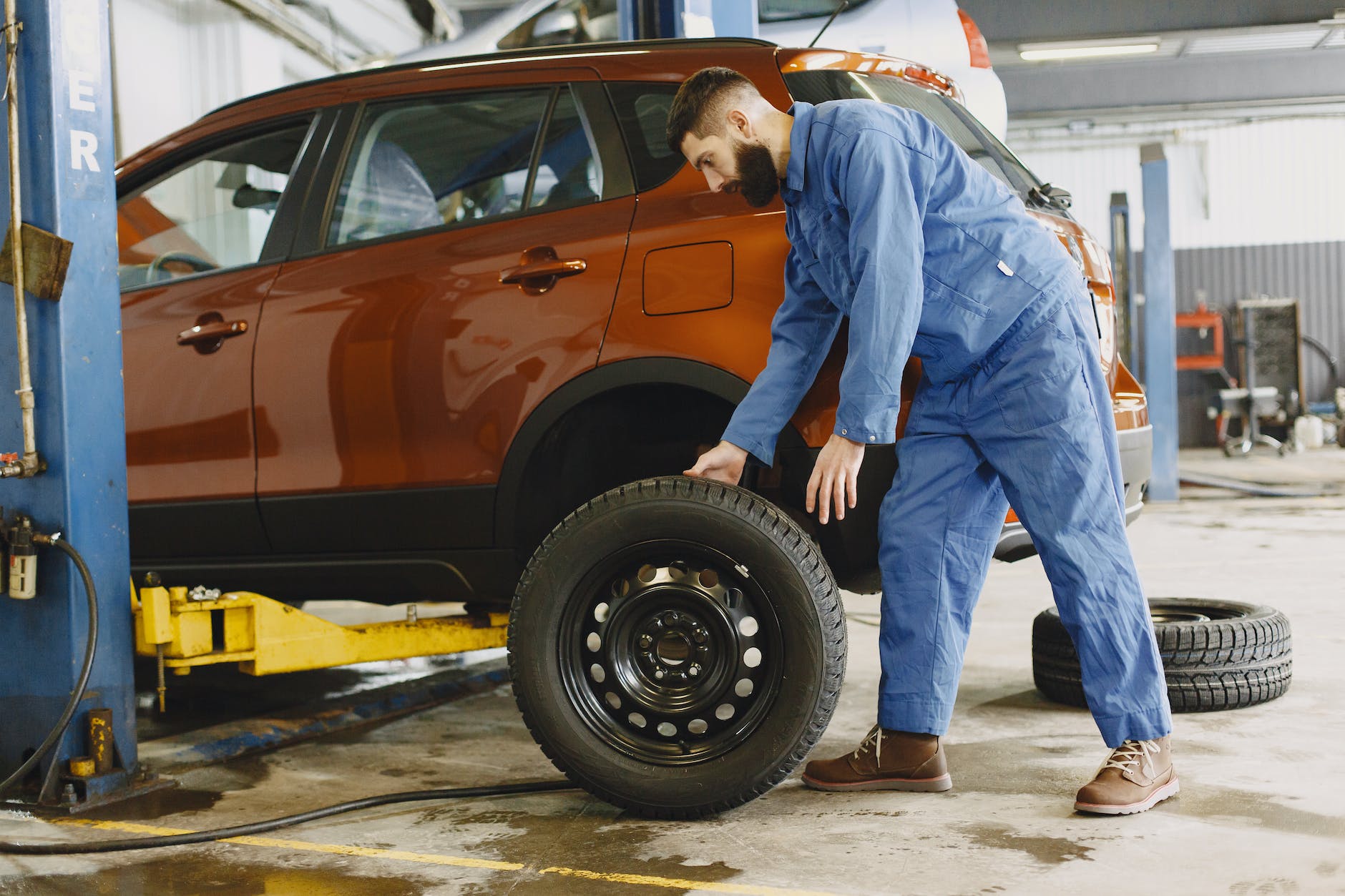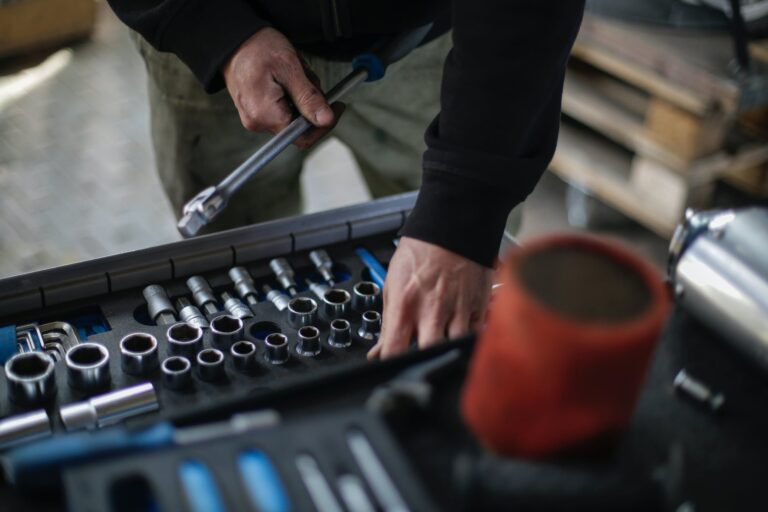The Importance of Brake Maintenance
Ensuring proper brake maintenance is crucial for the safety and performance of your vehicle. Neglecting brake maintenance can have serious consequences, while regular maintenance offers numerous benefits.
Consequences of Neglecting Brake Maintenance
Failing to maintain the brakes of a car can lead to serious consequences, including reduced braking performance, increased stopping distance, and even brake failure. These issues can result in accidents, injuries, and even fatalities (Trusted Wrench Auto). Poor brake maintenance reduces the longevity and performance of your vehicle, and contributes to accidents and injuries due to collisions (Action Gator Tire).
Benefits of Regular Brake Maintenance
Regular brake maintenance is essential to ensure optimal braking performance and safety. By adhering to a recommended brake maintenance schedule, you can enjoy several benefits:
-
Enhanced Safety: Well-maintained brakes provide reliable stopping power, allowing you to respond effectively to sudden obstacles or hazards on the road. Regular inspections and maintenance ensure that your brakes are in proper working order, reducing the risk of accidents and promoting the safety of you and your passengers.
-
Extended Brake Life: Routine brake maintenance helps identify and address issues before they become major problems. Regular inspections allow for early detection of worn brake pads, damaged rotors, or other components that may require replacement. By addressing these issues promptly, you can prolong the lifespan of your brakes and avoid more costly repairs in the future.
-
Improved Performance: Maintaining your brakes ensures optimal performance. Regular brake pad replacements, brake rotor inspections, and brake fluid flushes help maintain the efficiency and effectiveness of your braking system. This results in smooth, responsive braking, allowing you to maintain control of your vehicle in various driving conditions.
-
Cost Savings: Timely brake maintenance can save you money in the long run. By addressing minor issues early on, you can prevent more extensive damage to the braking system, which may require costly repairs. Additionally, routine maintenance helps avoid the need for premature brake replacements.
To keep your brake system in top condition, it is important to follow a recommended brake maintenance schedule. This includes regular brake pad replacements, brake rotor inspections, brake fluid flushes, brake caliper inspections, and brake hose inspections. The exact intervals for these services may vary based on factors such as vehicle make, model, and driving style (Action Gator Tire). Consulting your vehicle’s owner manual or consulting with a qualified mechanic can provide more specific guidance for your vehicle.
By prioritizing brake maintenance, you can ensure the safety, performance, and longevity of your vehicle’s braking system. Regular inspections and maintenance help detect potential issues early, allowing for timely repairs and a smoother, more reliable driving experience. Don’t overlook the importance of brake maintenance – it’s an investment that pays off in terms of safety and peace of mind.
Signs that Your Brakes Need Service
Regular brake maintenance is crucial for ensuring the safety and performance of your vehicle. It’s important to be aware of the signs that indicate your brakes may need service. Ignoring these signs can lead to further damage and compromise your safety on the road. Here are some common signs to watch out for:
Worn Brake Pads
One of the most noticeable signs that your brakes need attention is when you hear squeaking or squealing noises when applying the brakes. This can be an indication that the brake pads are worn and need to be replaced (Performance Honda Store). Brake pads play a vital role in stopping your vehicle and should be inspected regularly to ensure they are in good condition. If you notice any unusual noises, it’s best to have your brakes checked by a professional.
Squeaking or Squealing Noises
Another audible sign that your brakes may need service is squeaking or squealing noises when you apply the brakes. These noises can indicate worn brake pads that need to be replaced. The high-pitched sounds occur when the wear indicator on the brake pads makes contact with the brake rotor. If you hear these noises, it’s important to have your brake pads inspected and replaced if necessary.
Soft or Spongy Brake Pedal
When braking, if you notice that the brake pedal feels soft or spongy, it could be a sign of air in the brake lines or worn brake pads (Performance Honda Store). Air in the brake lines can decrease the effectiveness of your brakes, while worn brake pads may not provide sufficient stopping power. If you experience a soft or spongy brake pedal, it’s essential to have your brake system inspected and serviced by a professional.
Vibrations or Pulsations in the Brake Pedal
If you feel vibrations or pulsations in the brake pedal when applying pressure, it could indicate that the brake rotors are warped and need to be replaced (Performance Honda Store). Warped brake rotors can lead to uneven braking, causing a pulsating sensation in the pedal. This can compromise your ability to stop the vehicle effectively. If you experience these vibrations or pulsations, it’s important to have your brake system checked and the rotors inspected for any necessary repairs or replacements.
Brake Warning Light
The brake warning light on your vehicle’s dashboard is designed to alert you to potential issues with the brake system. If the brake warning light is illuminated, it’s crucial to have your brakes inspected by a professional technician. The light could indicate various problems, such as brake fluid leaks, worn brake pads, or issues with the brake system (Performance Honda Store). Ignoring the brake warning light can lead to further damage and compromise your safety on the road.
If you notice any of these signs indicating that your brakes may need service, it’s important to take action promptly. Seeking professional brake services can help identify the underlying issues and ensure the necessary repairs or replacements are performed. Regular brake inspections are essential to maintaining the safety and performance of your vehicle’s braking system.
Components of the Brake System
To fully understand the importance of brake maintenance, it’s essential to familiarize yourself with the key components of the brake system. The brake system consists of several crucial parts that work together to ensure safe and effective braking. Let’s take a closer look at each of these components.
Brake Pads
Brake pads play a critical role in the braking process. When you apply the brakes, the brake pads make contact with the brake rotors, generating friction that slows down the vehicle. Over time, brake pads wear down and need to be replaced. The lifespan of brake pads can vary depending on driving habits and conditions, but generally, they should be replaced every 25,000 to 70,000 miles (Trusted Wrench Auto).
Brake Rotors
Brake rotors, also known as brake discs, are the flat, round metal plates that the brake pads clamp onto to create friction. They are an integral part of the braking system and need to be in good condition for optimal braking performance. It’s important to inspect the brake rotors regularly for signs of wear and damage. If the rotors are worn or warped, they should be replaced to ensure smooth and efficient braking (Advance Auto Parts).
Brake Fluid
Brake fluid is a hydraulic fluid that transfers the force from the brake pedal to the brake components. It plays a crucial role in ensuring that the brakes function properly. Over time, brake fluid can become contaminated or degrade, compromising the performance of the braking system. It’s recommended to flush and replace the brake fluid every two years or as recommended by the vehicle manufacturer to prevent brake system failure (Trusted Wrench Auto).
Brake Calipers
Brake calipers are responsible for applying pressure to the brake pads, squeezing them against the brake rotors. They house the pistons that push the brake pads into contact with the rotors when you press the brake pedal. It’s important to have the brake calipers inspected regularly to ensure they are functioning correctly. If any issues are detected, such as sticking or leaking calipers, they should be repaired or replaced to maintain optimal braking performance (Advance Auto Parts).
Brake Hoses
Brake hoses are flexible tubes that carry brake fluid between the brake components. They are responsible for transmitting the hydraulic pressure from the brake system. It’s crucial to inspect the brake hoses for any signs of leaks or damage. If there are any issues with the brake hoses, such as cracks or bulges, they should be replaced promptly to prevent brake fluid leaks and ensure the integrity of the brake system (Advance Auto Parts).
Understanding the various components of the brake system is vital for recognizing the importance of brake maintenance. Regular inspections, replacements, and repairs of these components help ensure the safety and reliability of your vehicle’s braking system. If you suspect any issues with your brakes, it’s essential to seek professional brake services to address the problem promptly.
Recommended Brake Maintenance Schedule
To ensure the optimal performance and safety of your vehicle, it is crucial to follow a regular brake maintenance schedule. By adhering to this schedule, you can identify and address any potential issues before they escalate. Here are the key maintenance tasks that should be included in your brake maintenance routine:
Brake Pad Replacement
Brake pads are an essential component of the braking system and should be regularly inspected and replaced when necessary. The frequency of brake pad replacement can vary depending on driving habits and conditions. As a general guideline, brake pads should be replaced every 25,000 to 70,000 miles (Trusted Wrench Auto). However, it’s important to monitor the condition of the brake pads regularly and consider factors such as driving style, road conditions, and the manufacturer’s recommendations.
Brake Rotor Inspection
Brake rotors play a crucial role in the braking system by providing the surface for the brake pads to grip and slow down the vehicle. Over time, brake rotors can wear down or become warped, affecting braking performance. It is important to inspect the condition of the brake rotors regularly and replace them if necessary. Signs that your brake rotors may need attention include vibrations or pulsations felt in the brake pedal when applying the brakes (Performance Honda Store).
Brake Fluid Flush
Brake fluid is responsible for transmitting the force from the brake pedal to the brake components. Over time, brake fluid can become contaminated with moisture and debris, which can lead to brake system failure. To prevent this, it is recommended to flush and replace the brake fluid every two years or as recommended by the vehicle manufacturer (Trusted Wrench Auto). Moisture in the brake fluid can cause corrosion of the metal components and reduce the boiling point of the fluid. Regular brake fluid flushes help maintain the integrity of the braking system.
Brake Caliper Inspection
Brake calipers are responsible for applying pressure to the brake pads, causing them to clamp down on the brake rotors. It is important to inspect the brake calipers for any signs of damage or malfunction. Issues with the brake calipers can affect the even distribution of braking force, leading to uneven wear of the brake pads and reduced braking performance. Regular inspections can help identify any potential issues and allow for timely repairs or replacements.
Brake Hose Inspection
Brake hoses are responsible for transmitting brake fluid between the brake calipers and the master cylinder. Over time, brake hoses can deteriorate or develop leaks, compromising the integrity of the braking system. It is crucial to inspect the brake hoses regularly for any signs of wear, cracking, or leaks. Any issues with the brake hoses should be addressed promptly to prevent brake fluid leaks and potential brake system failure.
By following this recommended brake maintenance schedule, you can ensure that your vehicle’s braking system remains in optimal condition. Regular brake pad replacements, brake rotor inspections, brake fluid flushes, brake caliper inspections, and brake hose inspections are essential to maintain the safety and performance of your vehicle. Be sure to consult your vehicle’s manual and seek professional assistance from a brake service provider for any specific recommendations or requirements for your vehicle.
Different Types of Brake Systems
Understanding the different types of brake systems is crucial when it comes to brake maintenance. The two main types of brake systems found in vehicles are drum brakes and disc brakes. Additionally, the choice of brake pad material is an important consideration for optimal braking performance.
Drum Brakes
Drum brakes were commonly used on cars until the 1980s. This type of brake system consists of a drum attached to the inside of the wheel, with two heat-resistant pads that push outwards and squeeze the drum to stop the wheel. Drum brakes provide reliable stopping power and are durable in nature. However, as vehicles became more powerful, drum brakes became inadequate for stopping larger and faster cars. Consequently, disc brakes largely replaced drum brakes in modern vehicles.
Disc Brakes
Disc brakes are currently the most popular choice for most cars due to their superior performance. In a disc brake system, a disc (also known as a rotor) is attached to the wheel or axle. When the brake pedal is pressed, friction materials in the form of brake pads are forced against both sides of the disc, creating friction and slowing or stopping the wheel. Disc brakes offer several advantages over drum brakes, including higher pressure and a greater surface area for improved braking performance at high intensities. They are also more effective at dissipating heat, which reduces the risk of brake fade during prolonged braking.
Brake Pad Materials
Brake pads are a critical component of both drum and disc brake systems. Various brake pad materials are available, each with its own unique characteristics and performance attributes. The most common brake pad materials include:
- Organic: These brake pads are made from a combination of materials such as rubber, glass, and resin. They are generally quiet and produce less dust but may wear out more quickly compared to other materials.
- Ceramic: Ceramic brake pads are known for their durability and resistance to heat. They provide excellent braking performance, produce less noise, and generate minimal dust. However, they can be more expensive than other options.
- Semi-metallic: These brake pads are made from a mixture of metal fibers, fillers, and binding agents. They offer good performance across a wide range of temperatures and are typically more affordable than ceramic pads. However, they may produce more noise and dust.
- Full-metal: Full-metal brake pads are composed of a high percentage of metal, such as steel or copper. They provide excellent braking power and are highly durable, making them suitable for heavy-duty applications. However, they can be noisy and may cause more wear on brake rotors.
When selecting brake pads, it’s important to consider factors such as noise, durability, and braking capacity to ensure optimal performance for your specific vehicle and driving needs.
Understanding the different types of brake systems and brake pad materials is essential for maintaining and optimizing your vehicle’s braking performance. Regular brake maintenance, such as brake pad replacement, brake rotor inspection, and brake fluid flush, can help ensure your brakes are in top condition. Consult a professional brake service near you to determine the most suitable brake system and brake pad material for your vehicle.
Tips for Maintaining Your Brakes
Proper brake maintenance is essential for ensuring your safety on the road and extending the lifespan of your braking system. Here are some important tips to help you maintain your brakes effectively:
Visual Inspection of Brake Pads
Regularly inspecting your brake pads is crucial for identifying wear and tear. One simple way to assess the condition of your brake pads is by looking down on the brake assembly or “caliper” holding the brake pads. If the friction material on the pad or shoe is less than 1/4 inch thick (about 7 millimeters), it’s time to have the brakes inspected (Bridgestone Tire). Keeping an eye on your brake pads can help you catch any issues early on and prevent damage to other brake system components.
Listening for Unusual Noises
Unusual noises can be an indicator of brake problems. If you hear a deep, low noise that sounds like metal grinding or a rumbling growl when you apply the brakes, it may indicate that the brake pads are worn away and the backing plates are making contact with the discs or drums. This metal-on-metal contact can cause further damage to the braking system, so it’s important to have your vehicle brought in for brake service as soon as possible (Bridgestone Tire). Additionally, if you notice any squeaking or grinding noises when applying the brakes, it can be an indication that the brake pads are worn out and need to be replaced (Source).
Monitoring Brake Performance
Pay attention to the performance of your brakes. If you notice a soft or spongy brake pedal when applying pressure, it could indicate air in the brake lines or a problem with the brake master cylinder. Both of these issues require brake service to ensure proper brake function and safety (Source). Additionally, if the brake pedal vibrates or pulsates when you apply the brakes, it could be a sign of warped brake rotors. In such cases, the brake rotors may need to be resurfaced or replaced to restore smooth braking performance and prevent further damage to the braking system (Source).
Regular Brake Fluid Checks
Checking your brake fluid regularly is another important aspect of brake maintenance. Brake fluid plays a crucial role in transmitting hydraulic pressure to the brake components. Low brake fluid levels or contaminated fluid can compromise brake performance. Regularly inspect the brake fluid reservoir and ensure the fluid level is within the recommended range. If you notice any signs of brake fluid leaks or if the fluid appears dark or contaminated, it’s important to have your brake system inspected and the fluid flushed if necessary. Regular brake fluid checks can help prevent costly repairs and ensure optimal braking performance.
By following these tips for maintaining your brakes, you can help keep your braking system in top condition, ensuring your safety and the safety of others on the road. If you ever notice any signs of brake issues or require professional brake maintenance services, it’s essential to consult a qualified brake repair shop or brake mechanic for a thorough inspection and necessary repairs. Remember, regular brake maintenance is an investment in your safety and the longevity of your braking system.
Components of the Brake System
To understand the importance of brake maintenance, it’s essential to familiarize ourselves with the key components of the brake system. Each part plays a crucial role in ensuring optimal braking performance and safety.
Brake Pads
Brake pads are essential components of the braking system that come into direct contact with the brake rotors. They exert friction against the rotors to slow down or stop the vehicle. Over time, brake pads wear down due to this friction and need to be replaced. The lifespan of brake pads can vary depending on driving habits and conditions, but they generally last between 30,000 to 70,000 miles (Performance Honda Store). Regular inspections are necessary to determine the condition of the brake pads and ensure they are replaced when needed. For more information on brake pad replacement, you can refer to our article on brake pads replacement.
Brake Rotors
Brake rotors, also known as brake discs, are the flat, round metal discs that the brake pads clamp onto to create friction and slow down the vehicle. The rotors need to be in good condition to effectively dissipate heat generated during braking. Regular inspections are crucial to identify signs of wear, such as warping or grooving. If the brake rotors are damaged or excessively worn, they may need to be resurfaced or replaced. For more information on brake rotor inspection and replacement, you can refer to our article on brake rotor replacement.
Brake Fluid
Brake fluid plays a vital role in the brake system by transferring the force applied to the brake pedal to the brake components. It operates under high temperatures and pressure. Over time, brake fluid can become contaminated, leading to reduced braking performance and potential brake system failure. It is recommended to flush and replace the brake fluid every two years or as advised by the vehicle manufacturer to maintain optimal braking performance and safety (Trusted Wrench Auto). For more information on brake fluid maintenance, you can refer to our article on brake fluid flush.
Brake Calipers
Brake calipers are responsible for squeezing the brake pads against the rotors when the brake pedal is pressed. They play a crucial role in the braking process by applying the necessary force to slow down or stop the vehicle. Regular inspections are necessary to ensure that the calipers are functioning correctly and that the brake pads are making proper contact with the rotors. If any issues are detected, the calipers may need to be repaired or replaced. For more information on brake caliper maintenance, you can refer to our article on brake caliper repair.
Brake Hoses
Brake hoses are responsible for carrying brake fluid between the brake calipers and the brake lines. They need to be in good condition to ensure the proper flow of brake fluid. Over time, brake hoses can deteriorate or develop leaks, leading to a loss of brake fluid and potential brake system failure. Regular inspections are necessary to identify any signs of damage or wear in the brake hoses. If any issues are detected, the brake hoses may need to be repaired or replaced. For more information on brake hose maintenance, you can refer to our article on brake line repair.
By understanding the various components of the brake system, car owners can appreciate the importance of regular brake maintenance. Proper maintenance, including inspections, replacements, and fluid flushes, ensures the longevity of these components and contributes to optimal braking performance and safety. To find a reliable brake service near you, check out our article on brake service near me.







